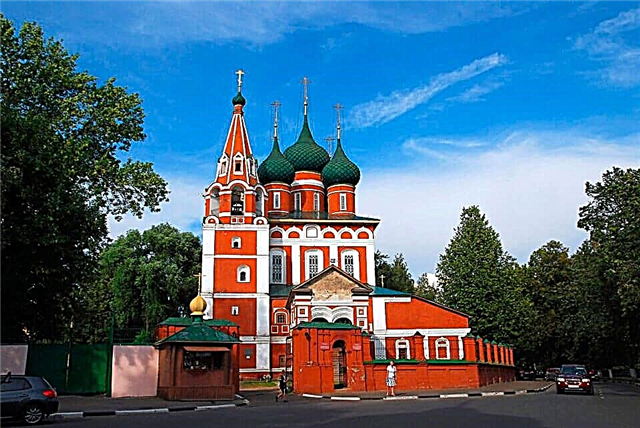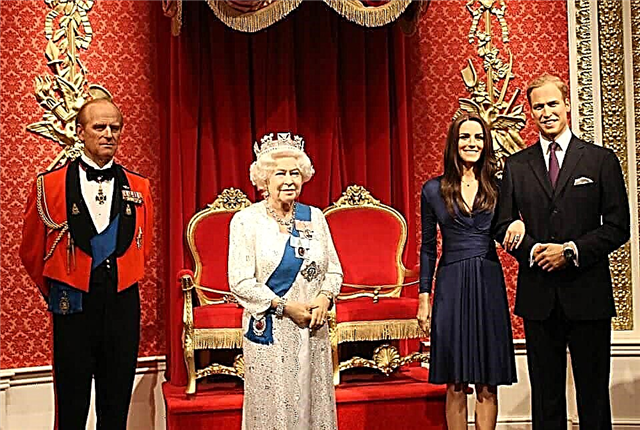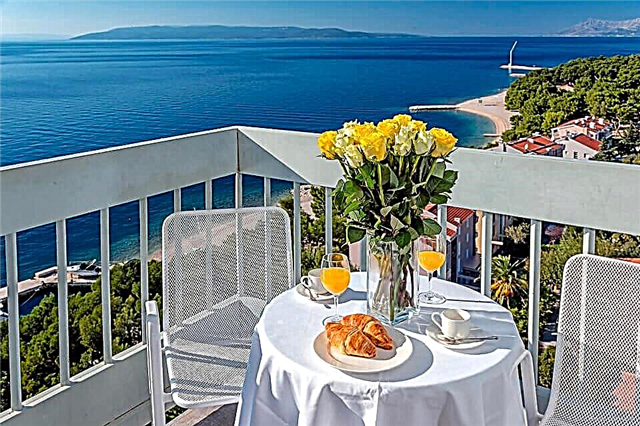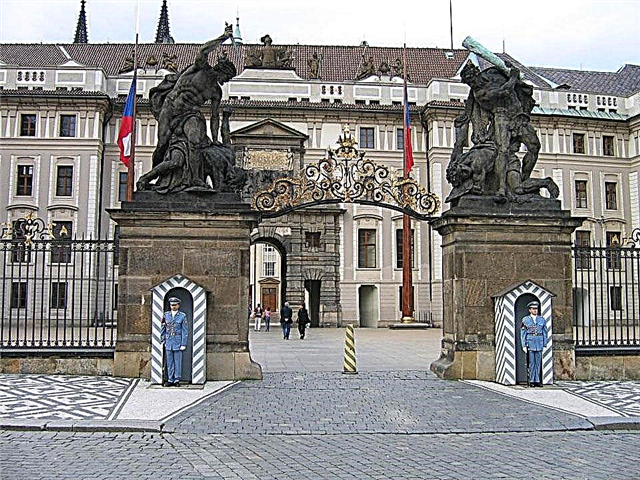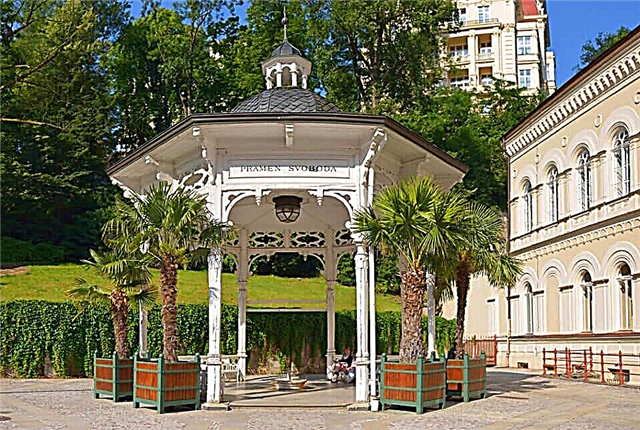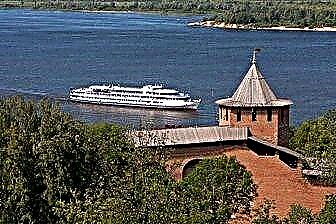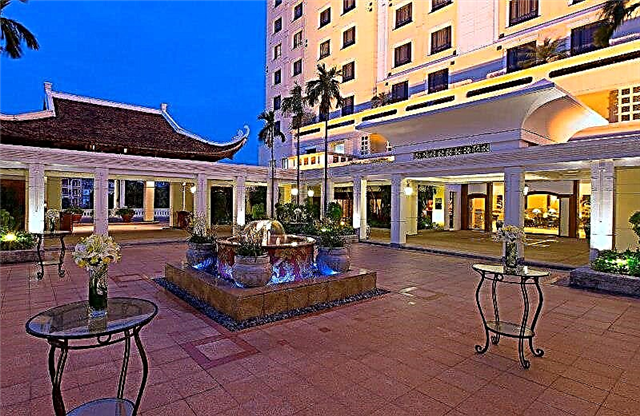The eternal city, as it is customary to call ancient Rome, is fabulously interesting and diverse, containing a lot of historical monuments, artistic sights and architectural masterpieces. The whole history of the once mighty empire was reflected in them, attracting with its secrets the endless pilgrimage of tourists from all over the world. This article will help you with practical advice on how not to get lost among the ancient cobblestone squares, majestic temples and museums, how to use your time more effectively to explore the main sights of Rome. With the help of our travel guide, you can create the best route around the city.
Spanish Steps

It is a kind of bridge between the stronghold of the French monarchy in Rome - the Trinita de Monti Church and the Spanish Square - a symbol of the Spanish stay in the Italian capital at the beginning of the 18th century. The grandiose structure, consisting of 158 travertine steps, has become a real architectural masterpiece. The wide central part is framed on both sides by crescent-shaped spans to the shine of the polished steps. To smooth out the contradictions between the French and the Spaniards, the architects decorated the side panels with heraldic symbols of the Bourbons and papal attributes in the form of an eagle and a crown.
For more than 2 centuries, the majestic building has not undergone even the slightest repair. Millions of viewers saw her in this original form during the famous "Roman Holiday", when the adorable heroine Audrey Hebpern is eating ice cream, sitting on a stone step. Many times the Spanish Steps have appeared in various film scenes. Now the wide steps serve as a stage for the demonstration of the clothing collections of famous Italian fashion designers, an arena for theatrical performances and concerts.
Capitol hill

One of the seven hills on which the city was born, Capitoline is the lowest and smallest in area. Despite this, it has always been the main center of the Eternal City. At its top is the Capitoline Square, on which there was a temple, erected in the 5th century BC. e. in honor of the gods of Ancient Rome: Jupiter, Minerva and Juno. But until the 16th century A.D. the hill was in great decline, overgrown with grass, goats grazed on it.
Now everyone who comes to the Capitol Hill can appreciate the architectural masterpieces located on the square of the same name. Right in its center is the bronze figure of Marcus Aurelius, one of the most progressive Roman emperors. The statue of Mark seated on a mighty rearing horse is surrounded by luxurious medieval buildings: the Palace of the Senators, the Palace of the Conservatives, the New Palace, the Church of Santa Maria in Aracheli, the Capitoline Museum. The ingenious author of these architectural masterpieces depicted on them many symbolic messages to the future, over the interpretation of which scholars are racking their brains. How happy everyone can feel who sees them and can unravel the meaning of these symbolic decorations on the palaces of the Capitol.
Be sure to go to the Basilica of St. Mary of Aracheli to touch the miraculous sculpture of the infant Christ and admire the extraordinary wooden carvings of the altar. In order not only to see all the significant objects of the Capitol, but also to reliably find out their history, it is better to visit them as part of a group with a guide.
Open: 09.00-17.30. Entrance - free.
Address: Capitoline Square (Piazza del Campidoglio).
To get to it on foot, you can take the Colosseum as a landmark, from it walk 15-20 minutes to the Capitol Hill. On the way, you can see the Roman Forum and the Venetian Square. It is better to choose the morning time for such a walk. If you are walking in the midst of a tourist pilgrimage, it is better to climb a small staircase with a wooden canopy (pergola) located on the right or along the Andreozzi (adjacent steep staircase).
Metro (line B), st. Colosseo.
Buses: 30, 51, 81, 83, 85, 87, 118, 160, 170, 628, 810 to the stop. Ara Coeli-Piazza Venezia. Tram: 8 - go to the final stop. Venice.
Coliseum

The most magnificent large-scale arena in the world was built in the 8th century AD. and was the main symbol of the power of the Roman Empire. The name of the ancient amphitheater is consonant with the word "colossus", denoting its enormous size and future longevity. Otherwise, the Colosseum was called the "Flavian Amphitheater".
At that time, it was the most capacious building in the world, capable of simultaneously receiving 55 thousand spectators in its stands. They watched with passion the mortal battles of gladiators, water battles of ships (the arena was filled with water from the Tiber) and other competitions in which few survived. With the rise of Christianity, bloody gladiatorial battles ceased at the beginning of the 5th century. Gradually, the Colosseum's importance as an arena for performances was lost, and it began to be used as a stable, storage and shelter for the homeless.

Now it is the greatest monument of ancient architecture, the design of which is an example of an ingenious project that provides for the extraordinary endurance and strength of a colossal structure. The basis of such durability is formed by numerous arched vaults, which made it possible not only to save building materials, ensure a long life for the walls, but also make a huge building outwardly delicate and elegant. It is a matter of honor for Italians to preserve the majestic remains for posterity, and visiting the most valuable monument of Roman civilization is a civic duty of every tourist.
To save time and money on travel, it is rational to combine a visit to the Colosseum with an excursion to the Capitol Hill, because these objects are located close to each other (see above). In order not to stand in line for a long time for a ticket at the ticket office of the Colosseum, you can buy it (the ticket) at the entrance to the Roman Forum, walking from the Capitol.
Address: Piazza del Colosseo, 1, 00184 Roma.
How to get there: metro (line B), st. Coliseum. Buses: 60,75, 85, 87, 175, 186, 271, 571, 810, 850.3 tram line.
Vatican Museum Complex

Despite the small area of the Vatican (0.45 sq. Km), its buildings house many museums and art galleries, examining which, one can draw a conclusion about the political and economic power of the mini-state. It contains the largest number of priceless treasures, works of art, literature, and historical monuments.
The Etruscan Museum contains exhibits found during archaeological excavations: Etruscan vases, bronze jewelry, various objects of art. Founded in 1839, the Egyptian Museum displays ancient Egyptian artifacts, including stone masks, mummies, various sarcophagi, Egyptian household items, a sand statue of Pharaoh Mentuhotep. The Apostolic Palace consists of 7 km of 1400 halls corridors containing a huge number of artistic masterpieces, including Raphael's Stanza ...

The Pinakothek (18 rooms) is a collection of religious paintings by the best Italian painters from the 11th to the 19th century. Here are the masterpieces of Raphael, Titian, Caravaggio, da Vinci and others. In addition to paintings, the halls contain unique icons, tapestries, sculptures, mosaic panels.
The Belvedere courtyard contains 2 palaces: Nicholas V and Innocent VII - both buildings are magnificent for their classical architecture, antique statues in the wall niches. In the common courtyard there is an original bronze sculpture "Sphere in a Sphere".
The Sistine Chapel is an undoubted gem among the Vatican museums, which is painted with amazing frescoes by Michelangelo with biblical subjects, Botticelli, Perugino, etc. The Vatican Library is a repository of a huge collection of printed and handwritten rarities of antiquity, recent past and present.
It is better to visit museums with a guide, if this is not possible, you can pay for an audio guide along with the tickets.
Museums are open: Monday-Saturday, 09.00-18.00; except for Sundays, days declared as state and great church holidays.
Address: Viale Vaticano.
How to get there: from Termini railway station by metro (line A), stop. S Pietro.
Buses: 32, 49, 81, 492, 982 to the stop. Vatican Museums.
Tram 19 - stop Piazza del Risorqimento and walk 100 m from it.
On foot from Termini - along the street. Via Nazionale; from pl. Venice - on the street. Corso Vittorio Emmanuele.
The Sistine Chapel

Outwardly, a modest, unremarkable building was erected on the territory of the Vatican by decree of Pope Sixtus IV as a house church (1473-1483), in which the papal leadership could reliably hide in times of danger. But the interior decoration, the decoration of the Sistine Chapel simply plunges into an emotional shock with the unprecedented beauty of the ceiling and wall frescoes. Their authors were the most prominent painters of that time: Michelangelo, Botticelli, Perugino and others. All Michelangelo's works are eternal masterpieces that have no control over the centuries.
His main brainchild - a huge fresco that occupies the entire wall behind the altar "The Last Judgment", evokes sacred awe. Its warning plot about a universal catastrophe, the characters are so expressive in the manifestation of their feelings that they act on the audience more convincingly than any sermon and morality. The ingenious master devoted 4 years of tireless work to the painting. This chapel is a true treasury of biblical and Old Testament stories depicted in artistic form. If you find yourself in the Vatican, be sure to visit it to touch the high spiritual beauty!
Raphael's Stanzas

In 4 small rooms of the papal palace of the Vatican, one can see frescoes of amazing artistic expressiveness and divinity, painted on the vaults of the ceiling and walls. The great Raphael in them reflected the philosophical views of the rulers of the Vatican, poetry, justice, stories, legends and traditions of the past. Images of the Holy Trinity, Our Lady, John the Baptist, Dante, Aristotle, Pythagoras, Plato and other famous personalities are written with great love. The unfading beauty of the painting has been shaking the imagination of everyone who comes here for many centuries.
25-year-old Raphael put his heart, soul and physical strength into this work, leaving his masterpieces as a great gift to future generations. The fresco "Constantine" was painted by Raphael's students. Words are not enough to express how beautiful his frescoes are. To see them is great happiness!
Saint Paul's Cathedral

This cathedral - one of the four main religious shrines - was built in memory of the crucified companion of Christ, who was martyred in the era of Nero. On the site of his burial, a majestic cathedral was erected, which was rebuilt, reconstructed many times and acquired its present magnificent appearance. Eminent craftsmen also worked on it, including Michelangelo and his students.
The classic masterpiece of architecture shines with external and internal beauty, grandeur and scale. Inside there are many sculptures, bas-reliefs, paintings, which are first-class works of art. The statue of St. Peter is impressive, which, in the opinion of the parishioners, has miraculous power (everyone wants to touch it). The ashes of several popes and noble aristocrats rest in the cathedral. In the Sacristy of the temple, the Cathedral Treasure Museum is organized, where religious Catholic artifacts are collected. You need to buy a separate ticket here, and the general inspection of the cathedral is free.
How to get there:
Metro (line A): stop. Ottaviano Cipro.
Tram 19, stop. Risorgimento - San Pietro.
Buses: N 590th (stop Risorgimento); N49th - stop. Musei Vatiicano
Pantheon

The Pantheon is an ancient temple, presumably built in the 2nd century. n. in honor of the ancient Roman gods, became another striking symbol of the Roman Empire. In terms of the genius of its embodiment, its design is not inferior to the Colosseum, confirming once again the idea that at all times there are talents. The fact that it has survived unchanged to this day testifies to the ability of architects to build conscientiously for centuries. It is hard to believe that the towering dome of the monument weighs 5 thousand tons and has not yet collapsed, as it happens in some modern buildings.
Moreover, the dome has a through hole 9 m in diameter, through which precipitation gets inside. The Pantheon amazed the imagination of the great creators of the Middle Ages and Renaissance, who considered it the true repository of the divine spirit. Raphael, like many other famous personalities, he is buried in it (which he dreamed of). There are not enough words to describe all the grandeur, grace and beauty of this architectural masterpiece. You just need to see it, as millions of pilgrims from all countries of the planet do it.
To thoroughly inspect this miraculous building, you should come here immediately after opening (09.00 - 19.00), because during the day there is a constant "crush" of tourists. Admission is free, you can view it without restrictions.
Address: Piazza della Rotonda, 00186, Roma.
How to get there: metro (line A), st. Barberini.
Buses: 30, 40, 62, 64, 81, 87, 49.
Tram: 8.
St. Peter's Square

A unique historical object is St. Peter's Square, the need for which arose after the construction of the majestic cathedral of the devoted disciple of Christ, who was martyred. So many believers came here that the temple was not able to accommodate everyone. Therefore, it was necessary to equip the square, which has become the most beautiful and famous in the world: from the window of his residence, located here, the Pope addresses the parishioners.
It is a favorite destination for residents of all ages and tourists visiting the area's sights. The majestic Peter's Cathedral, the ancient Egyptian granite obelisk, wonderful fountains, sculptural monuments of the holy apostles Peter and Paul, an architectural masterpiece - the residence of the Pope - everything is so beautiful and magnificent around that you just go numb with admiration.
If your stay in the city is short-term, a tour of the square may be preceded by an excursion to the Vatican, since it is located on the border with the mini-state. You can come here early, when there are still few people on it, take a close look at everything and then go to the Vatican Museums. This will save time and money for travel, and the day will be full of unforgettable impressions. During breaks, you can dine and relax in the nearby cafes.
How to get to the square: A trip on the metro (line B) to the Ottaviano San-Pietro station will bring a lot of pleasant impressions, but you should not lose your vigilance among the motley crowd in the carriages.
Advice to ladies: if temperamental young macho people begin to gallantly look after you, do not relax, so as not to get into the situation of the heroine of Inna Churikova in the movie "Casanova's Cloak". These courtship, smiles, passionate glances can end in harsh extortion of money for flirting.
Buses go to the square: 23, 34, 40, 271 (the most convenient routes). You can drive up by taxi or a rented car, if you don't save money.
Roman forum

This is the territory of hoary antiquity, where the pulse of the social and political life of the center of a great empire once beat, where Triumphal processions took place, laws were passed and the fate of people and states was decided. Powerful emperors dressed in crimson togas ruled here in luxurious marble palaces; here were held popular assemblies and all the most important fateful state events.
The antique open-air museum is an exciting spectacle that beckons to itself with the dust of distant eras, the grandeur of noble ruins, the opportunity to clearly travel back many centuries and experience the thrilling feeling of belonging to the unique sights seen. And there are a lot of them here, and each has an interesting history. Those who want to get acquainted with them in more detail have the opportunity to use the audio guide (4 услугами) or guide services.
If you wish, you can take a picture here with "gladiators" (men in gladiator costumes) as a souvenir.
Address: Via della Salaria Vecchia, 5/6
The entrance is open: every day, 08.00 - 17.00, Apr-Oct. - until 17.30.
Santa Maria Maggiore

The construction of one of the main 4 churches is based on the legend about the prophetic dream of the Bishop of Liberia, in which the Most Holy Virgin who appeared to him ordered to build the temple where it will snow in the morning. This explains the erection of the basilica on the Esquiline Hill. Even now 05.08 every year on the square in front of the church they celebrate the day of the miraculous snowfall, when hundreds of white petals rise and fall in the church, symbolizing snowflakes from the bishop's prophetic dream. In the evening everything is repeated on the square after the festive concert.
The Church of St. Mary is a real architectural wonder, created by the collective efforts of many talented architects, sculptors, painting and chasing masters. Among the unsurpassed artistic masterpieces in the design of interiors, there have been preserved narrative mosaic paintings (5th century), magnificent frescoes with Old Testament subjects, and striking floor ornaments (13th century).
A priceless treasure is the Holy Cradle of Jesus at the central altar with a statue of Pius IX, who respectfully bowed his knees before the shrine. Admiration is caused by the incredible beauty of the design and magnificent decoration of the chapels, tombs and all the premises of the basilica. To see with your own eyes the whole range of colors, lines, details of amazing church interiors, to feel high spirituality is a great happiness! Such visits inspire talented people to create poetic and musical masterpieces, such as the songs "Roman Midnight" and "Santa Maria Maggiore".
Address: pl. St. Mary Maggiore, 42.
It is easier to reach the church on foot from the Termini railway station along the street. Cavour (walk 10 min.)
Open for the village every day, 07.00-19.00.
Baths of Caracalla

To be precise, it must be said that the Baths of Caracalla are now the ancient ruins of a once grandiose structure built in the 2nd century AD. during the time of Marcus Aurelius, nicknamed Caracalla. But even by the ruins, one can judge the power and wealth of the Roman emperors, who were able to create such complexes. The Baths of Caracalla is not just a bathhouse, but a whole plant, where conditions for a comfortable pastime were created: you could warmly steam, wash, splash in a huge pool located in a vast hall. In the baths, there was an opportunity to play various board games, go in for active sports or just sit in a cozy atmosphere.
Today, there are traces of luxurious decoration in them: the remains of the magnificent tiling of floors and walls made of colored mosaics. Judging by the incredible thickness of the walls, it is easy to guess what a huge amount of materials went into construction. It hosts concerts of celebrities, famous symphony orchestras, whose performances look very romantic against the backdrop of the majestic ruins. Therme is a valuable architectural monument that testifies to the highest level of civilization of the former empire. If you wish, you can walk for hours among the noble ruins.
Trevi Fountain

It is too primitive to call this grandiose sculptural and stone masterpiece a fountain, although, in fact, it has been a source of pure water since the 13th century. However, the ambitious intentions of the popes to decorate the Trevi Square as luxuriously as possible turned the once modest drinking spring into a real artistic and architectural miracle. It was created by several architects and sculptors for almost 30 years (1732-1762), creating a unique frame of magnificent sculptures that make up ancient subjects for pouring water.
Mighty Neptune, who is raised from the water element by sea horses and newts harnessed to a chariot; the goddesses of Health and Abundance greet those who come to the fountain with divine dignity. The latter generously throw coins to the stone ladies (1.5 million Є per year!) In the hope of their mercy. The sculptural composition of the fountain successfully complements the view of the ancient palace, creating the impression of a single complex of stunning beauty.
The Trevi Fountain has repeatedly appeared in documentaries and feature films, on magazine covers and postcards. The vivid love scene of the film "La Dolce Vita" by F. Felinni takes place in the January water of the fountain, the heroes of Gregory Peck and Audrey Hebpern, A. Celentano and O. Mutti met against its background in other films. Recently, the fountain is operational again after reconstruction.
How to get there:
You can take the metro (line A) to the stop. Spagna or Barberini. Walk a little from them.
August Forum

Another ancient remnant of the former greatness of the Roman Empire is the Forum of Augustus, which paid much attention to the development of construction and architecture. All structures of the Forum of Augustus were part of the Roman Forum and were surrounded by a high defensive wall (height 30 m), which is quite well preserved. Several columns, part of the podium and stairs to the temple have survived from the main temple of Mars. The extant statue of Mars is now on display in the Capitoline Museum as an example of prehistoric art.
Time has not destroyed the arched entrance vaults of the Forum of Augustus. Arches - a very persistent element of Ancient Rome - were used in the construction of all colossal buildings, and now modern architects are actively using arched technologies in the construction of monumental structures.
You can get there by metro (line B) to the stop. To get a more complete picture of these buildings, you can inspect all 4 (they are located next to each other).
Rocca Savello area

The uniqueness of this area of the main city of the Apennine Peninsula is that it is a kind of combination of a steep climb and a garden. If you want to see unusual panoramas of the city, appreciate its scale and take a fresh look at the already familiar sights, you should definitely take the time to visit this unique place.
The lift is located in the very center, not far from the Circus Maximus. As soon as you find yourself here, feelings of peace and slight envy will visit you. After all, how can one city absorb so much beauty? On the entire planet, only Rome can boast of gorgeous gardens that have been intertwined with stone monuments for many, many centuries.
Bring your camera with you, and you are guaranteed to be able to capture the Italian capital from an interesting angle. Later, you will be proudly able to show these pictures to your friends and family, making them wonder what kind of city appeared in front of their eyes.
Copped quarter

The fabulous quarter that is known as Copede is located in the area of the Policlinico metro station. Fairy palaces, frog fountains and unique architecture of buildings - all this and much more is looking forward to every guest. Among those tourists who managed to visit the unusual quarter, there is an opinion that it is strikingly different from all other areas of the city. This place will start to surprise you from the very entrance, which is decorated with a unique arch that connects the two Palaces of the Ambassadors. As the name implies, diplomatic representatives once lived in these apartments.
After taking a few steps, you will come across a statue of the Madonna, which invites you to visit this amazing quarter. I almost forgot to mention the huge wrought iron chandelier, which is another decoration of the entrance arch. Even after so many centuries, it looks grandiose, you can see its smallest details and appreciate the tremendous work that has been done by its creators.

Immediately behind the arch, you will see the impressive Piazza Mincho, which locals call the “heart” of the quarter. A few words should be said about the history of the quarter's origin. In the early 20th century, an architect named Copede received an unusual commission.The main idea was to create a quarter of Rome that would combine all the known styles of architecture. The construction was carried out at the personal expense of Cherruti. It took more than 10 years to build all the buildings.
Although the quarter was initially considered as an area for the middle strata of the population, as a result, thanks to the mass of attractions and an unusual approach to the implementation of the project, Copede attracted the more affluent segments of the city's population. And today the quarter is among the most popular, and its real estate is considered the most in demand. And a few more words should be said about the most unusual fountain. The frog fountain got its name from the abundance of stone sculptures of these animals, which are located along its entire perimeter. They are accompanied by four mythical figurines.
Casina della Civette

The Italian pavilion villa known as the "Casina della Civette" attracts tourists with its unusual design. This place resembles some kind of a kind fairy tale, always with a happy ending. A unique building was presented to us all by Giovanni Torlonia, who was the customer of such an unusual villa and the brilliant architect Giuseppe Valadier, who was able to create such a unique architectural project.
By the way, "civetta" is translated as an owl. It was this bird that the customer and hereditary representative of the Roman nobility considered his talisman. It is not surprising that images of this bird can be found on every corner. Today the villa has officially received the status of a museum, which can be visited by everyone. Without exaggeration, the grandiose building can be called unique.
Quarter of the Jews

The Jewish ghetto is considered one of the oldest in the entire world. The first mentions of Jewish diasporas in the vastness of Italy date back to 161 BC. It was from this year that the mass migration of representatives of this nation to the territory of the Apennine Peninsula began. When the post of Pope was taken by Paul IV Karaffa, all Jews were ordered to be resettled in a special ghetto, and also to be marked with a special sign.
Their rights were significantly reduced, they were forbidden to engage in commercial activities. The Roman ghetto has a long history, with more black pages than white ones. But the unique combination of rare architecture and historical overtones make this place an attractive destination for many tourists who come to the Eternal City.

Special attention will be paid to the Mattei Palace and the unique Turtle Fountain, which is located right in front of it. By the way, one very interesting legend is connected with this fountain, according to which a beautiful fountain was created in just one night by the hands of Duke Mattei, who wanted to show his best side in front of his future father-in-law. Being an avid gambler, he managed to lose all his fortune, including the palace, overnight, exposing himself in an unattractive light in front of the father of the bride-to-be, who wanted to cancel the wedding.
In order to somehow rehabilitate himself, he decided to create something unique overnight. And so, first before the bride and father-in-law, and later before all the tourists, a beautiful view of the fountain opened up. Whether it is worth believing such unusual legends is up to you, but the Turtle Fountain is always full of coins from all those who are eager to return here again. In addition to unique buildings, the ghetto boasts some of the best pastry shops and bakeries in the entire city, so don't be lazy and visit a couple of them, checking all the flattering reviews yourself.
Botanical Garden

One of the most fascinating places for nature lovers is the Botanical Garden, located on the Gianicolo hill. According to official information, the national park has over 3,000 plants. A visit to this place is recommended for all lovers of romance, because the cozy paths meandering among the lush greenery and carry away with them into the world of beauty. Evening walks will be especially exciting, when the air is saturated with the special aromas of rare plants, allowing both body and soul to rest to the fullest and gain enough energy to go to conquer other areas tomorrow.
Colosseum in miniature

Another interesting place in the Eternal City, which has been undeservedly forgotten by the compilers of tourist routes, is the “Colosseum in miniature”. In fact, this is the oldest gladiator trainer that performed and brought victory to its owners in the most famous bloody arena in Italy.
It is impossible to overestimate the historical significance of this place. Every visitor to the city who is at least a little interested in the history of the Roman Empire, is fond of gladiator fights, should include Ludus Magnus in the list of must-see places. It was here that the bloodiest and most impressive battles in the arena of the Colosseum were trained, the best fighters of the great Roman Empire honed their fighting skills.
Fountain of the Four Rivers

The construction of one of the famous fountains dates back to the middle of the 17th century. Its central element is a 16 meter high granite obelisk, created in ancient times. Both ancient Roman emperors, who gave the order to dismantle the monument and install it in a new place, became the last in their ruling dynasties, were killed in the struggle for power. The sculptor Bernini (the author of the project of the fountain) and Pope Innocent X (the customer of the work) did not overtake the "curse of the obelisk": each lived for more than 80 years.
Every day, thousands of tourists throw coins into the bowl of the fountain in Piazza Navona, making a wish to return to Rome. Initially, the obelisk had bas-reliefs of Isis and Serapis. In place of the ancient Egyptian gods, Italian masters placed Christian symbols. The top of the obelisk was decorated with a metal figure of a dove with an olive branch - a symbol of the Pamphilj clan, to which Innocent X belonged.
The monument was surrounded by a sculptural group of 4 figures of river gods: Danube, La Plata, Nile, Ganges. They symbolize the conquered by Christianity Europe, America, Africa and Asia. Figures of animals, plants, a small lake became the final elements of the baroque structure. Water enters the fountain through the system of ancient Roman drainage systems.
Fountain of Neptune

The building is located in the northern part of Piazza Navona. Initially, the fountain resembled a bowl. Its construction dates back to the 16th century. There were workshops not far from the water source, where they made copper items. The building was called the "fountain of coppersmiths". After 300 years, the city authorities decided to reconstruct the bowl, various proposals were considered. After the scandal and accusations of corruption, the organizers of the competition chose and combined the projects of Antonio Della Bitta and Gregorio Zappali.
The craftsmen have created a neo-baroque masterpiece, whose elements make up a single ensemble. The sculptors, one might say, have invented a new myth about the deity. Neptune is surrounded by creatures familiar from legends, but in ancient times there were no legends about the battle of God with an octopus! There is a version: the Italians knew about the kraken and did not dare to place the sculpture of the monster, because the appearance of the "older relative of the octopus" promises earthquakes.
Circus Maximus

The largest ancient hippodrome on the banks of the Tiber River is associated with the legends of Hercules, the abduction of the Sabine women, the harvest deities. Circus competitions began to be held in the 5th century BC. The dimensions of the arena allowed 12 chariots to race at the same time. The annual competition played a magical role and was timed to coincide with the end of the harvest. The circus served as an outdoor entertainment center. Its semicircular arena with two obelisks, stone lower floors for privileged spectators have survived to this day.
The wooden part of the buildings, where ordinary citizens could have been, did not survive. A similar fate befell the taverns and shops located above. The circus was completed several times.Julius Caesar ordered to increase its area so that at the same time up to 250 thousand citizens of the empire could be at the hippodrome.
The circus repeatedly burned, its buildings were dilapidated, hundreds of spectators died during performances - parts of the structure could not withstand the load. The hippodrome was repaired, it continued to function until the XIV century. Then his stones were used in the construction of new buildings. Today, large concerts and mass celebrations are held on the territory of the circus.
Trajan's Forum

A large part of the structure, opened in 106, is dedicated to trade. The forum is named after the Roman emperor who gave the order for its construction. On the territory of the building there were temples of Trajan and Venus deified during his lifetime. Near the altar in front of the statue of the goddess, the Romans entered into marital unions. The state had a system of marriage contracts. They drew up and signed documents in the buildings adjacent to the temple. The gigantic structure was decorated with a triumphal arch and a column with a sculpture of Trajan.
The author of the forum project: Apollodorus of Damascus was exiled and executed by order of Hadrian, the emperor's adopted son. The building has outlived its creator for centuries, becoming a standard for ancient forums and medieval Christian churches. The size of its covered colonnades (of which fragments remain): 120 by 200 meters. Trajan's column, 38 meters high, parts of the Temple of Venus, walls of shopping arcades have survived to this day. Some of the columns of the two-tiered basilica, whose height was 50 meters, have survived. The last building had nothing to do with religion: political and economic issues were solved within its walls.
Caesar's Forum

The great ancient Roman commander and statesman was no stranger to beauty: Julius Caesar donated huge sums of money for the construction of temples and the implementation of ambitious projects. The forum named after him is a confirmation of this. The time when the construction of the structure began is considered to be 54 BC, when Caesar acquired a site for construction for 100 million sesterces. The question remains controversial: were they silver or copper coins? By minting money from inexpensive metal, the politician solved the problem of lack of funds in the empire's budget.
The acquired site already had a Roman Forum. It was expanded to a size of 75 by 170 meters. Nearby, the temple of Venus and the basilica were erected, which served as a stock exchange. Shops and craft workshops worked nearby. They were built during the reign of Emperor Hadrian. It was he who, having come to power, ordered the execution of his father's favorite: the forum architect Trajan. The decoration of the complex and the reason for a scandal in society were the statues of Caesar and Cleopatra.
Free morals and the cult of the family in ancient Rome were combined in a very interesting way! Incest in the ruling dynasties, orgies, marriages with getters, same-sex love were not censured, the Egyptian queen-mistress - on the contrary. After fires, wars, improperly organized excavations, parts of the arched gallery, columns, fragments of buildings remained from the former splendor of the complex. Here you can see a bronze statue of Caesar (an exact copy of a lost antique masterpiece made of marble).
Villa Medici

At this place in ancient times there was a palace and a garden where Messalina, the third wife of the ancient Roman emperor Claudius, was killed. The name of this woman has become a symbol of debauchery. Emperor Nero, famous for his cruelty, is her own grandson. Valeria Messalina grew up in an atmosphere of political intrigue and orgies. In an effort to gain power over the empire, she decided to kill her husband (her blood relative) and elevate her lover to the throne. Messalina was captured by the supporters of Claudius, accused of a state conspiracy, an insult to the gods, and executed in front of her mother.
Until the 16th century, vineyards were located here. Representatives of the Medici oligarchic dynasty bought the land in order to build the villa. The building was erected according to the canons of mannerism (one of the forms of the early baroque). The Medici invested heavily in the acquisition of antique rarities. When arranging the villa, ancient Roman artifacts found on the site were used.
After 200 years, the direct branch of the dynasty was interrupted, representatives of the no less influential Alsatian house turned out to be the owners of the building. Later, by order of Napoleon, the property passed into the ownership of the French Academy of Arts. The building still belongs to France. The Academy implements a policy of accessible education: Italians and citizens of other states are admitted to it without examinations.
Castel Sant'Angelo

In guidebooks, the building is often called "Hadrian's Mausoleum". The architectural monument consists of a cylindrical building surrounded by a wall of a square courtyard. On the terrace of the castle there is a figure of an angel. Initially, the building served as a burial vault, then - a castle-fortress and a papal residence, where luxurious apartments and torture rooms, reception halls and secret underground passages were adjacent. Today the castle is a military history museum.
The mystics call it a place of power. According to the legends: in the 16th century, the Archangel Michael appeared here, after which the epidemic of the plague stopped. The beginning of the construction of the "Sad Castle" (another name for the structure) dates back to the II century. The mausoleum, faced with white marble, contained the tombs of the ancient Roman emperors, including Hadrian. The ancient treasures were plundered during the capture of the fortress by the Visigoths, and the clergy also contributed to the destruction of the tombs.
Later, the castle was repeatedly restored, changes were made to its layout, premises for the papal library, jewelry, and a secret archive were equipped. Decorative elements on the facade were made in the Baroque style, a clock was placed on the main building, but this did not change the ominous atmosphere of the fortress, where representatives of the criminal Borgia dynasty once lived.
Bridge of the saint angel

Historians date the construction of a pedestrian bridge across the Tiber River to the 2nd century. The building connects the center and the fortress-castle of the Holy Angel. They form a single architectural ensemble. Both monuments are united by a common history, far from romance and medieval ballads about noble knights.
The bodies of heretics, criminals and simply not pleasing to the Holy See of Italian subjects were hung on the bridge.
Marble slabs, magnificent sculptures visually make the gloomy place attractive, but tourists note the heavy atmosphere of the bridge. In the 15th century, the structure partially collapsed due to heavy load, and the pilgrims died. Repairs were carried out, 100 years later, statues of angels, the apostles Peter and Paul were installed along the pedestrian zone. However, the bridge has not turned into a favorite walking place for foreigners and townspeople.
Pincho Hill

Scientists explain the desire of ancient civilizations to build cities on seven hills by the belief in the magic of numbers. Rome and Moscow were built with this rule in mind. However, the ancient city also has an eighth hill: Pincho. Its name comes from the surname of a dynasty of landowners who owned the plots in the area. Among the most famous properties located on the hill are the Borghese and Medici villas.
Pincho was located outside the city limits, but the beauty of the gardens blooming on the hills attracted aristocrats. Representatives of the elite acquired plots, villas, and the hill gradually became part of the city. The layout of the gardens and buildings was changed several times. For a long time the French lived here. Another name - "Caesar's Gardens" - the hill received thanks to the ambitious project of Napoleon.
As a result of various transformations, Pincho turned into a park area with shady alleys, fountains, benches. It is dominated by the canons of classicism. 228 busts of outstanding figures of science, culture, politics, art are placed here.From the height of the hill, magnificent views of the Eternal City open up; two monumental staircases lead to it. One was built in the neoclassical style, the other according to the baroque canons.
Villa Borghese

The largest Italian landscape park is located on the Pincho hill, occupies 80 hectares, is famous for magnificent landscapes, reservoirs, antique statues, museums. The aesthetics of classicism are multifaceted, and Villa Borghese is proof of this. The English style is the opposite of the French style, where strict lines reign. Parks of Great Britain in the style of classicism are man-made masterpieces inspired by nature, the harmony of natural beauty. This is the landscape solution chosen for the Italian villa.
The history of the park dates back to the 17th century. After 300 years, it was bought by the state and transferred to the ownership of the city. Later, children's attractions were placed on the territory. The latter are allocated certain areas so that young visitors do not interfere with lovers of silence. The park has 3 museums, 2 galleries, the Globe Theater, where you can see Shakespeare's plays in interpretations adopted during the time of Queen Elizabeth I. Museum collections include works of Etruscan art and contemporary artists and sculptors. One of the galleries is named after the princely family of Borghese. Its halls house paintings by Raphael, Titian, Caravaggio, Bartolomeo, Romano.
Keyhole

Located at the gateway to the Villa of the Order of Malta on the Aventine Hill. Guidebooks say: through an amazing keyhole, you can see 3 states at the same time. Is it so? The Order of Malta, which owns the villa, is called the state. It falls under the jurisdiction of the Roman Catholic Church. The world's oldest knightly religious order is a member of the UN and the Council of Europe, issues its own currency, issues passports, and has the right to establish and break diplomatic relations.
Italy recognizes the sovereignty of the order, its government, and the Constitution. Those who look through the keyhole also see St. Peter's Basilica. More precisely: the dome of a temple built on the territory of the Vatican. The sovereign dwarf state is headed by the Pope. The Vatican is a member of the UN, has a special international status, does not issue its own currency, and provides its citizens with passports. The third state is Italy, of which Rome is a part.
Church of Trinita dei Monti

Built in the 16th century, the temple is located on the Spanish Steps, which connects the square in the old part of the city with the top of the Pincho hill. The Church belongs to the category of titular. This means that the priest who is in charge of the parish has a cardinal dignity. Funds for the construction of the building were donated by Louis XII, for the restoration of the same object - Louis XIII. France to this day is responsible for the condition of the temple and the surrounding area.
The construction of the church took 80 years. Its architecture is focused on the canons of the late Renaissance, but in the interior and exterior there are elements of the Romanesque style, the Gothic. The building suffered during the Napoleonic wars. Some of the decor elements, paintings and frescoes have been lost forever. Later, changes were made to the interior and exterior decoration. In both towers of the church, the bell towers have been restored, below which are the traditional and sundial.
Today the temple consists of several chapels dedicated to biblical events and Catholic saints. His main relic is the work of the Italian sculptor Volterra "Descent from the Cross". Some of the most famous sights of the temple: An antique obelisk near the facade and a white marble statue of Christ at the entrance to the inside of the building.
Church of Santa Maria del Popolo

The unique building was erected in the 16th century on the site of a Roman chapel. The church belongs to the Augustinian order, belongs to the category of titular, which gives the right to rule the parish only to the cardinal priest. There is a version: Emperor Nero, who went down in history as a persecutor of Christians, was buried at this place. His soul (according to local legends) did not find rest and settled in a poplar.
Pope Paschal II saw the Virgin Mary, who ordered the tree to be cut down and a chapel built to protect the Romans from evil spirits. Legends say: the church contains an icon of the Most Pure One, created by the Apostle Luke. Scientific research has refuted the hypothesis: the age of the oldest image of the Mother of God in the church does not exceed 800 years. The Augustinians rebuilt the building several times. Within its 5 limits are the tombs of the highest clergy and Roman nobles.
The interior and exterior solutions of the building are dominated by the Renaissance and Baroque elements. The main treasures of the temple: frescoes, mosaics, paintings, which were worked on by prominent Italian masters. Raphael, Piombo, Carracci, Caravaggio, Pinturicchio created their masterpieces for the church. Some of the unique works of the Augustinians had to be moved from the church, because ancient paintings require special storage conditions.
Basilica of Santa Maria in Cosmedin

The church, erected in the 6th century, is recognized as one of the main shrines. According to the dogmas of Catholicism: believers in such a church receive the forgiveness of all sins. In ancient times, there was a temple of Hercules. One of the activities of the Christian parish was the distribution of food to the poor. After 200 years, he became part of the Greek community. It was founded by monks who fled from Byzantium, where, as a result of the church schism, the iconoclasts came to power. The temple was damaged by earthquakes.
The building was preserved thanks to large-scale capital repairs and restoration work. Scientists date the construction of the temple's 34-meter bell tower to the XII-XIII centuries. Guidebooks usually indicate that it consists of 7 tiers. This is not so: the structure has 2 additional tiers "hidden" inside the church.
To save the basilica from destruction, to strengthen the walls, additional columns were installed. In the interior and exterior, the influence of the Baroque, pseudo-medieval style is noticeable. One of the most famous relics of the basilica: the marble disc "Mouth of Truth" weighing over a ton. The artifact resembling a male mask was made in the 1st century. The disc could be an attribute of secret initiation not only in Christianity. There is a legend that the mouth of the mask did not let go of the liar's hand. A similar ritual of laying hands on the mouth of masks is adopted in the pagan mysteries.
Doria Pamphilj Gallery

The building was built in the 17th century. The founders of the private collection were representatives of several aristocratic families, but its name recalls only two dynasties. The families of Doria and Pamphilj repeatedly entered into marriage alliances, possessed economic and political influence, family ties with the higher clergy. The collection began with 4 paintings by Caravaggio, one of which is now in the Louvre.
Then the collection was replenished with works by Lorrain, Bronzino, Piombo, tapestries, sculptures, furniture. Some of the works for her were created to order by leading European artists. The gallery-palace contains over 500 unique pieces of art. The first floor of the building houses exclusively works by Dure. The Velvet Hall contains sculptures, precious furniture, golden consoles, samples of rare fabrics, handcrafted by Italian craftsmen.
The ballroom consists of two rooms, where you can see accessories belonging to the nobles and a rare musical instrument: a double harp. The heart of the palace is a chapel with unique artifacts. It is surrounded by gallery rooms where masterpieces by Raphael, Titian, Bellini, Carracci, Parmigianino are kept. Each room reminds of the kinship, friendship of the families of Doria and Pamphilj with the powerful of this world. The Mirror Gallery - about Versailles and links with the French royal court, the Aldobrandini Hall - with the Vatican.



